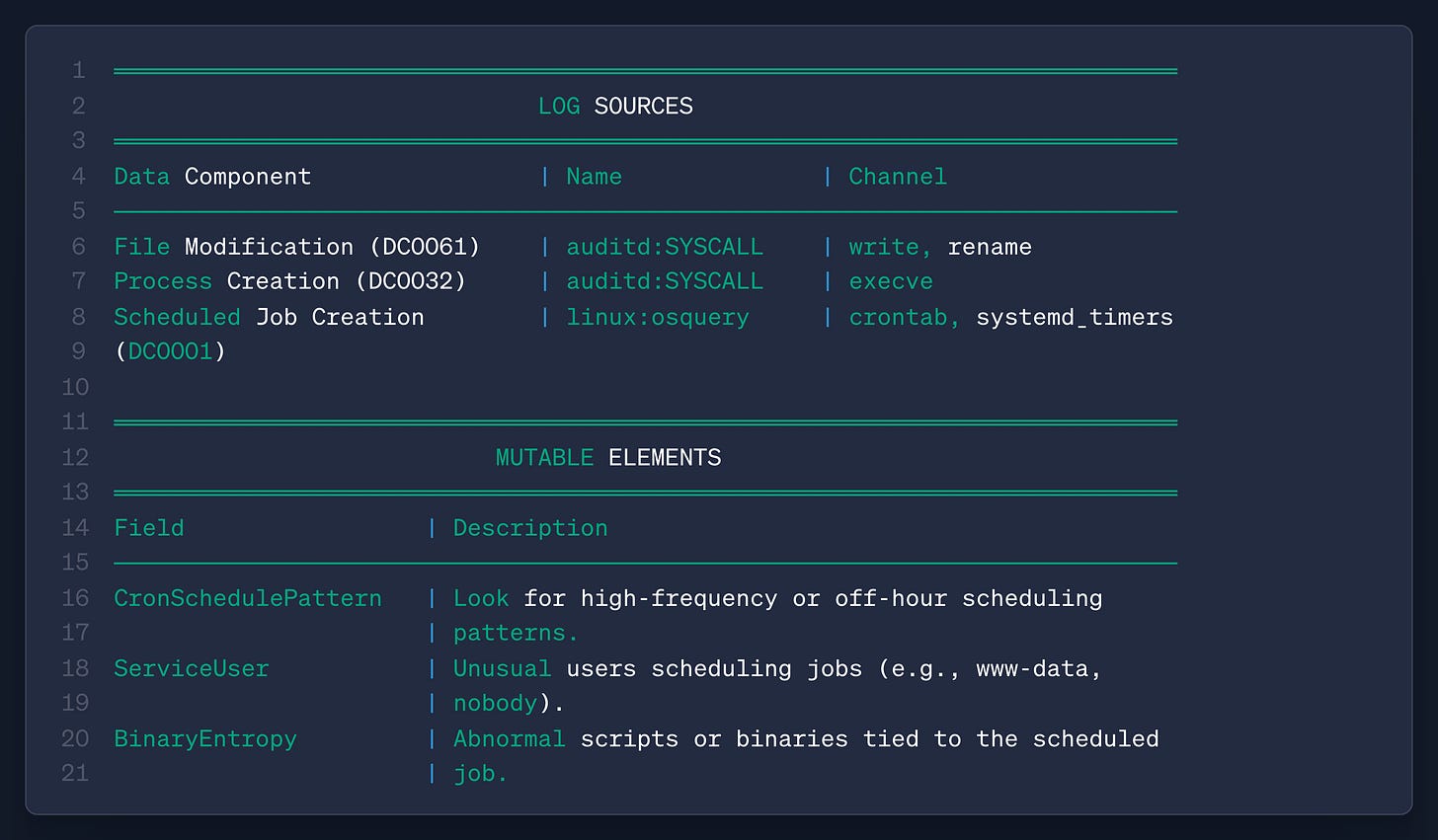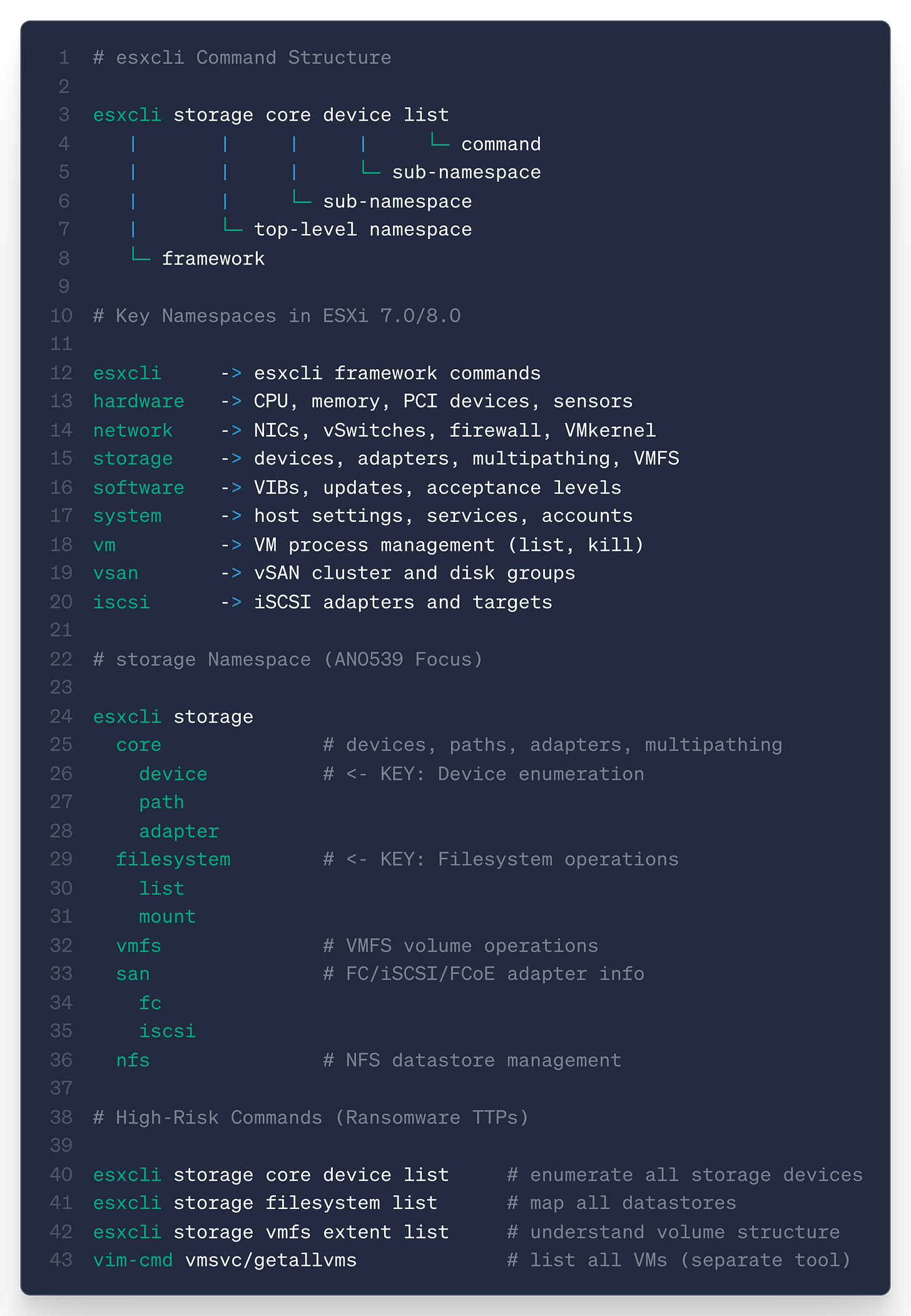DEW #136 - ATT&CK V18 deep dive, Cyberslop @ MIT & Aisuru repurposes to residential proxies
Action Bronson voice: "I hunt cyberslop on my arch box, Vicuña pajamas draped, terrace views in Amalfi"
Welcome to Issue #136 of Detection Engineering Weekly!
✍️ Musings from the life of Zack in the last week:
I’m trying something different here and performing a deeper analysis on content where I think it matters for y’all. It won’t happen often, but whether it’s a Gem or a piece of Threat Landscape news, I want to give you all my take beyond what you normally see, especially if it’s a story I’m particularly passionate about!
I just hit my 4-year anniversary at Datadog, so time is flying by. My 3-year anniversary for the newsletter is in a few weeks and it feels wild thinking about doing this for 36 months.
I stole every adult-sized candy bar from my kids at Halloween, and I didn’t think twice about it.
This Week’s Sponsor: Hack The Box
Your Tools Don’t Defend. Your People Do.
Threats evolve faster than your tech stack. Hack The Box keeps your teams ahead of attackers with hands-on, continuous upskilling that powers real Continuous Threat Exposure Management (CTEM).
Equip your people with the skills to validate, prioritize, and respond effectively and build the true resilience that keeps your organization ready for whatever comes next.
💎 Detection Engineering Gem 💎
ATT&CK v18: The Detection Overhaul You’ve Been Waiting For by Amy L. Robertson
New ATT&CK version drops always deserve a feature in this newsletter, and I’m very pleased to see the changes in v18!
There are several techniques and procedures added to the ATT&CK arsenal, but I’d like to focus my analysis on the usefulness behind Detection Strategies for detection ideation and tuning.
Detection Strategies
The new version shipped a large change in how ATT&CK approaches detections via Detection Strategies. I wrote about this in Issue 121, but the common gap with ATT&CK is linking a technique or procedure to detection guidance. Through the use of STIX Domain Objects, defenders can now leverage these detection opportunities via machine-readable data, rather than relying on freeform text. Here’s an example leveraging Scheduled Task/Job Abuse:
I used Linux as an example here. You have three data components associated with finding scheduled job attacks. Each of these components has a log source name and channel. So, for line 6 (DC0061), you can use auditd syscall monitoring and look for writes and renames of cron files. The mutable elements part helps with detection tuning, and this can be everything from frequency analysis to environmental context, such as unusual users scheduling jobs.
Enterprise Updates & ESXi Detection Strategy Example
The team added several new tactics, and there seems to be a big push on cloud-native technologies. For example, adding the Container CLI or API (in the case of Kubernetes) is a great step to capturing how threat actors are moving away from on-prem technologies but using similar techniques to move through the kill-chain.
Local Storage Discovery, for example, highlights typical discovery tradecraft for finding interesting volumes on a victim machine. But there’s nuance here with whether you are on a cloud server, Windows host, or a Hypervisor. Looking at the Detection Strategy DET0188, a detection engineer can switch between Analytics platforms and perform their own testing based on the data components and channels. Now let’s work through tuning, and I’ll pick on this Sigma rule, ESXi Storage Information Discovery Via ESXCLI.
Nas’ and Maurugeon’s rule successfully implements the Data Component → Name → Channel analytic, but the rule may be broader (high recall) and requires tuning. If you study the Mutable Elements table, you can scope this rule down to restricting alerts based on ssh_source_ip being from outside your perimeter, or by tuning the esxcli_command_scope. Let’s tune via the command scope.
Reading the developer portal for esxcli, and with a bit of help from Claude, the command scope namespace looks like the following:
Lines 40-42 could be potential tuning updates to the Sigma rule to make it more precise. This would obviously need some testing, but moving from Analytic → Sigma Rule → ESXi command line documentation (thanks, Claude) to tuning was much easier.
For a deep dive into this type of detection research, check out Nathan Burns’ blog on the topic, which I posted in Issue 100 as a Gem.
Why is this important?
In my example, I walked through a tuning opportunity for ESXi. I’m not an ESXi expert, but I have good knowledge of Linux threat detection and MITRE ATT&CK. The Detection Strategy quickly oriented me to understand core detection opportunities, but also provided tuning ideas for broad to precise esxcli commands to alert on. Additionally, it took it a step further with SSH source IP environment hardening.
The ATT&CK knowledge base can now serve more than just a reference table for techniques. You can dive into each technique, get relevant examples for threat actors, and it points you to strategies with specific data sources and channels to alert on. It cuts down the time I would spend on Googling or setting up environments to smash my head on the keyboard until I get the right logging configuration to generate the alert telemetry.
☣️ Threat Landscape
CyberSlop — meet the new threat actor, MIT and Safe Security by Kevin Beaumont
This new series by Kevin Beaumont revolves around a new term he coined, “CyberSlop.” The definition I’ve gleaned from his writing is taking traditional FUD marketing techniques in cybersecurity and leveraging trusted institutions (like MIT in this story) to make AI-threat claims even more credible, especially through research papers and blog posts that lack evidence.
The story in this first edition revolves around a bold claim by MIT researchers in a paper that 80% of ransomware gangs use AI in their operations. After digging into the paper and publicly calling it out, it disappeared from the MIT website. Two of the authors are from Safe Security, a cybersecurity startup. As it turns out, the principal MIT researcher is on their board, with no disclosure of this conflict of interest in the paper.
Aisuru Botnet Shifts from DDoS to Residential Proxies by Brian Krebs
DDoS-for-hire botnets don’t pay enough to criminals who run them. At the end of the day, it's an inconvenience that sites suffer, and the Googles and Cloudflares of the world have gotten so good at soaking traffic, making me think they are even more irrelevant than before.
Residential proxies, on the other hand, are where money CAN be made. And this piece on the Aisuru botnet, a DDoS-for-hire botnet turned into residential proxy provider, is a good breakdown of these intricacies. In this post, Krebs exposes a web of proxy services, parent companies and the grayhat style recruitment they have of unsuspecting devices to build their new-age botnet.
Ukrainian National Extradited from Ireland in Connection with Conti Ransomware by U.S. Department of Justice
The U.S. DoJ extradited a suspected Conti member residing in Ireland. Lytvynenko was first arrested in 2023 at the request of the FBI, and has been facing extradition proceedings since then. There are some wild numbers cited in this report, which highlight the prolific nature of Conti. Lytvynenko is accused of extorting $150 million in ransomware payments from Conti victims alone.
SesameOp: Novel backdoor uses OpenAI Assistants API for command and control by Microsoft Incident Response
This is the first threat report I’ve read where a threat group leverages OpenAI as a C2 channel. SesameOp is the name of a new malware family by Microsoft Incident Response which uses OpenAI’s now-deprecated and slated-for-removal next year Assistant API. The malicious DLL queries the Assistant API vector store to find infected hostnames and then leverages the Assistant’s description field to execute a command.
The vector store part here is interesting because I imagine it makes detecting abuse much more challenging for security teams at OpenAI. You can typically scan platforms for victim or malicious domains, but do you now need to scan every vector store for the same thing?
A new breed of analyzers by Daniel Stenberg
Stenberg, the creator and head maintainer of cURL, triages and patches numerous security vulnerability submissions. In the before AI times, these submissions were (mostly) done by humans with some level of automated slop from fuzzers. Since then, a large number of LLM-generated slop submissions have burdened the cURL team.
It was cool seeing this update almost as a Part 2 of the post I linked. AI-backed vulnerability discovery and submission platforms are getting much better, especially those that have venture capital behind them, rather than a “researcher” running some LLM locally to find security weaknesses.
🔗 Open Source
kas-sec/version.dll-sideloading
Neat proof of concept abusing OneDrive.exe and DLL sideloading to gain execution in the OneDrive process. Once it gains execution, the malware registers exception hooks via Vectored Exception Handling (VEH) to bypass EDR detection. The registered exception handler hopefully avoids being hooked by the EDR process so you can evade detection.
center-for-threat-informed-defense/attack-workbench-frontend
ATT&CK’s frontend application that serves as a self-hosted knowledge base for detection engineers and the ATT&CK library. With the latest v18 release, you’ll see additional resources leveraging Detection Strategies.
EDR killer technique that leverages the Windows Filtering Platform to prevent EDR agents from phoning home to cloud infrastructure. Super useful for preventing alerts from being sent to the cloud, but could still be noisy as an EDR evasion technique.
zopefoundation/RestrictedPython
Sandbox-like Python runtime execution environment for running untrusted code. It’s not a sandbox like a virtual machine, but it’s a subset of the Python language that restricts risky primitives in Python that can be used maliciously.
Go-based reverse shell handler that integrates several types of reverse shells into one interface. So if you have a bash reverse shell and a PowerShell cmdlet reaching out, it will automatically detect the environment and shell type so you can select via its TUI-like interface.




